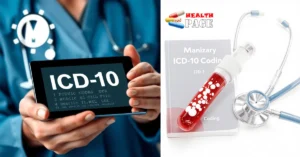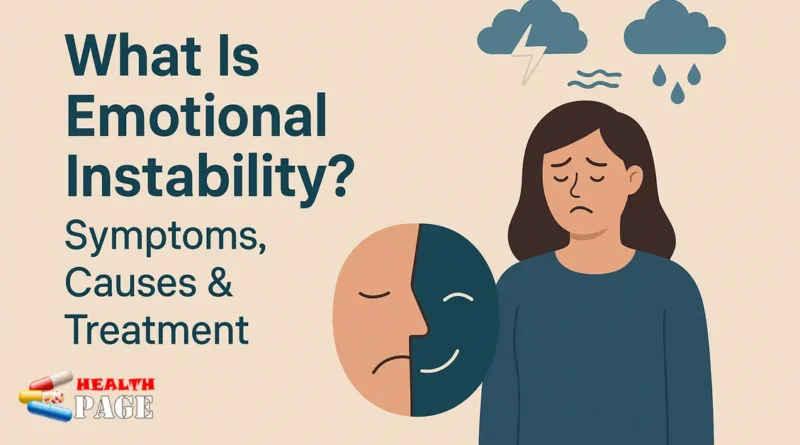What is Emotional instability, symptoms , cause and treatment.
Have you ever felt so depressed and helpless that you didn’t want to live? And a minute later you were already fluttering like a butterfly, ready to bestow your affection on the first person you meet? Well, then this article is for you – emotional instability and how to deal with it.
General information about the symptom/condition
Most doctors classify emotional instability as a personality disorder. However, it is not that simple, because this symptom is often a visible manifestation of some disease.
As already mentioned, emotional disorder is characterized by a sharp change in mood – from one extreme to another, from crazy fun to crying out loud – irritability, irascibility, impatience, rejection of other people’s opinions and criticism. People with such a symptom demand increased attention to themselves, get offended when they do not receive it, show aggression, both verbal and by actions. It usually manifests itself in adolescence, as well as in psychological illnesses.
There are two types of emotional instability:
- impulsive
- border
Impulsive emotional disorder manifests itself in resentment, capriciousness and aggression. A person sees only the bad in the environment, it seems to him that everyone is against him and everything that happens is to spite him.
Borderline emotional instability is characterized by sudden mood swings, aggression, excessive sensitivity, painful perception of failures and obstacles on the way to the set goal. Teenagers who exhibit this symptom are restless and inattentive at school and in everyday life. They are prone to drug addiction and alcohol abuse, offenses of varying severity, depression and suicide.
Emotional Instability Cause: Understanding What Triggers Mood Imbalance
Emotional instability, marked by intense mood swings and difficulty managing emotions, can stem from multiple underlying causes. Identifying the root causes is essential for effective treatment and long-term emotional wellness.
1. Mental Health Conditions
One of the leading causes of emotional instability is the presence of underlying mental health disorders. Conditions such as borderline personality disorder (BPD), bipolar disorder, depression, and anxiety often contribute to unpredictable emotional responses.
2. Traumatic Experiences
Unresolved trauma—especially from childhood—can affect brain development and emotional regulation. People who’ve experienced abuse, neglect, or significant loss may struggle with persistent emotional turbulence.
3. Hormonal Imbalances
Fluctuations in hormones due to thyroid issues, pregnancy, menopause, or other medical conditions can significantly influence emotional balance. These changes can alter neurotransmitter function, leading to mood swings or emotional hypersensitivity.
4. Stress and Environment
Chronic stress, burnout, or living in an unstable environment can overwhelm the brain’s ability to process emotions. Without healthy coping mechanisms, even small stressors may result in intense emotional reactions.
5. Substance Abuse
Drug and alcohol misuse can interfere with the brain’s chemical balance, leading to erratic emotions and impaired judgment. In many cases, emotional instability is both a cause and effect of substance abuse.
Emotional Instability Treatment: Effective Ways to Regain Balance
Emotional instability, often characterized by unpredictable mood swings, irritability, and difficulty managing emotions, can disrupt daily life and relationships. Fortunately, effective treatments are available that help individuals regain emotional control and lead balanced lives.
Understanding the Root Causes
Before initiating treatment, it’s crucial to identify the underlying causes. Emotional instability may stem from unresolved trauma, stress, hormonal imbalances, or mental health conditions such as borderline personality disorder or bipolar disorder. A comprehensive psychological assessment can guide the appropriate treatment plan.
Therapeutic Approaches
Cognitive Behavioral Therapy (CBT) is one of the most recommended treatments for emotional instability. It helps individuals recognize negative thought patterns and develop healthier coping strategies. Dialectical Behavior Therapy (DBT), a branch of CBT, is especially effective for those struggling with intense emotional reactions.
Lifestyle Changes and Support
Incorporating mindfulness practices like meditation and deep-breathing exercises can enhance emotional regulation. Regular physical activity, a balanced diet, and adequate sleep also play vital roles in emotional stability. Building strong social support systems and engaging in meaningful connections further aid recovery.
Medication and Professional Help
In some cases, psychiatrists may prescribe mood stabilizers or antidepressants to address underlying imbalances. It’s essential to consult mental health professionals for accurate diagnosis and personalized treatment plans.


